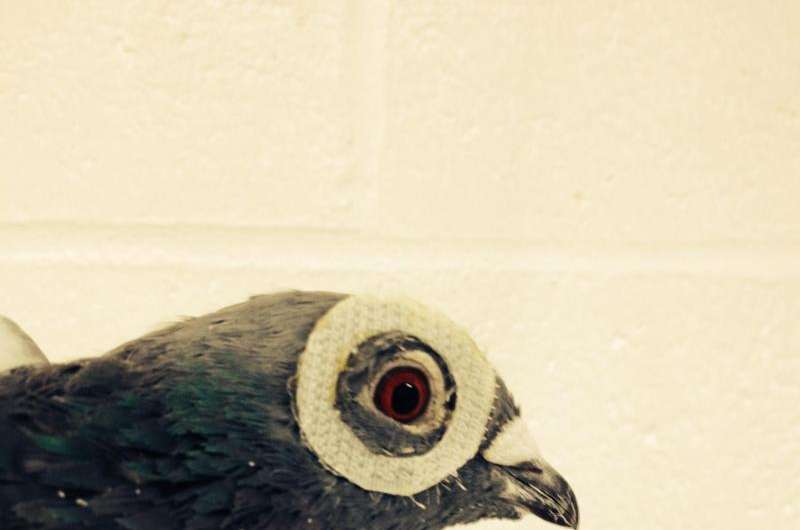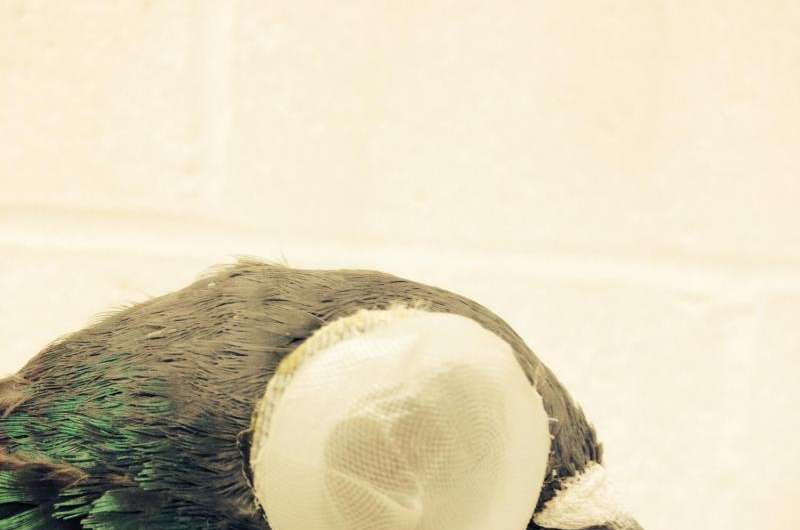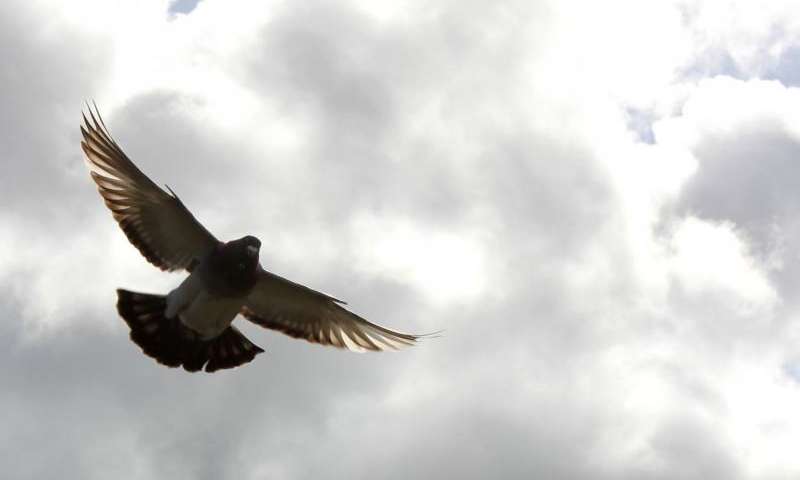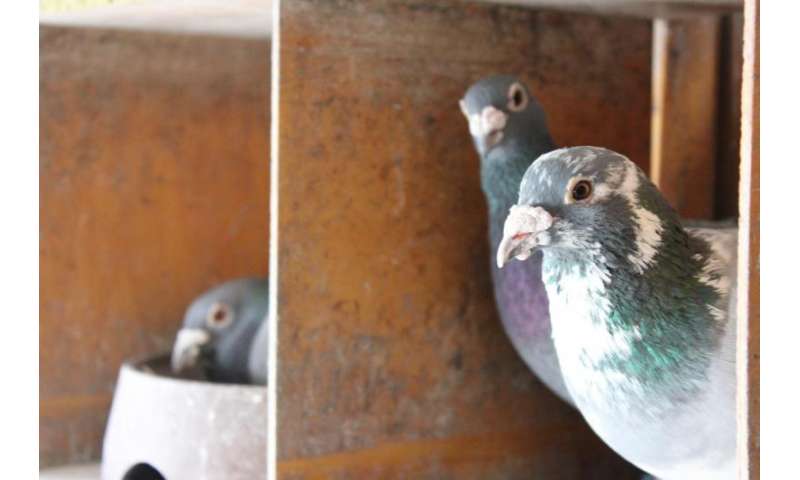October 7, 2015 report
Study shows visual clues important for pigeons homing abilities

Bob Yirka
news contributor

(Â鶹ÒùÔº)—A small team of researchers with Oxford University in the U.K. and the University of Pisa in Italy, has through experimentation, found that homing pigeons use visual cues to help them find their way home. In their paper published in Proceedings of the Royal Society B, the group describes their study and results which they suggest, help explain the birds' remarkable abilities.
Most everyone knows that homing pigeons are good at finding their way home when released from a distant vantage point, but, despite a lot of study by a lot of scientists, it is still not clear just how exactly the birds do what they do. This new study suggests that at least for known flight patterns, the birds rely mainly on visual cues.
In humans, visual information taken in by one eye passes into one of the brain's hemispheres and is then shared with the other hemisphere via the corpus coliseum—birds do not have such a connection, which suggests that visual information from one eye is not shared between hemispheres. This provides a unique opportunity to test whether homing pigeons rely on visual cues to make their way home—by covering one eye as the bird flies.

To test whether visual clues are an important navigational aid, the researchers enlisted the assistance of 12 homing pigeons, each trained to follow a four kilometer flight path from one site to another. But, each was trained with one eye covered. Once they were trained, the team then had the birds fly the same route 18 times with the other eye covered to see if they followed the same route. As it turns out, the route was not the same, which suggested the bird had to rely on other means (odors, magnetic fields, etc.) to figure out the way home—they seemingly "forgot" how to get home as they had already learned. Birds that served as a control group, on the other hand, flew very nearly the exact same path to get home each time.
The team reports that GPS data from sensors on the birds indicated that they appeared to rely more and more on memorized visual clues (rivers, roads, etc.) the more times they flew the same route, which comes close to proving that using visual cues is one of the primary ways that pigeons find their way home.
-

Credit: © Emma Truswell -

Credit: © Emma Truswell
Written for you by our author —this article is the result of careful human work. We rely on readers like you to keep independent science journalism alive. If this reporting matters to you, please consider a (especially monthly). You'll get an ad-free account as a thank-you.
More information: Asymmetric visual input and route recapitulation in homing pigeons, Published 7 October 2015.
Abstract
Pigeons (Columba livia) display reliable homing behaviour, but their homing routes from familiar release points are individually idiosyncratic and tightly recapitulated, suggesting that learning plays a role in route establishment. In light of the fact that routes are learned, and that both ascending and descending visual pathways share visual inputs from each eye asymmetrically to the brain hemispheres, we investigated how information from each eye contributes to route establishment, and how information input is shared between left and right neural systems. Using on-board global positioning system loggers, we tested 12 pigeons' route fidelity when switching from learning a route with one eye to homing with the other, and back, in an A-B-A design. Two groups of birds, trained first with the left or first with the right eye, formed new idiosyncratic routes after switching eyes, but those that flew first with the left eye formed these routes nearer to their original routes. This confirms that vision plays a major role in homing from familiar sites and exposes a behavioural consequence of neuroanatomical asymmetry whose ontogeny is better understood than its functional significance.
Journal information: Proceedings of the Royal Society B
© 2015 Â鶹ÒùÔº


















